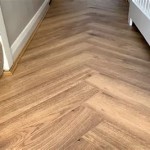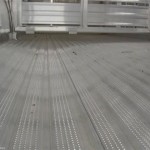Garage Rubber Flooring: A Comprehensive Guide
Garage rubber flooring has become increasingly popular in recent years as homeowners seek durable and versatile solutions for their garage spaces. This type of flooring offers a wide range of benefits, from enhancing aesthetics to providing a safe and comfortable surface. This article will delve into the key aspects of garage rubber flooring, exploring its advantages, installation process, and considerations for selection.
Advantages of Garage Rubber Flooring
Garage rubber flooring offers numerous benefits over traditional concrete floors, making it an attractive option for both residential and commercial garages. Here are some of the most notable advantages:
- Durability: Rubber flooring is highly resistant to wear and tear, scratches, and dents. It can withstand heavy foot traffic, moving vehicles, and the impact of dropped tools.
- Shock Absorption: Rubber flooring provides excellent shock absorption, reducing noise and vibration caused by heavy objects. It can also protect your tools and equipment from impact damage.
- Water Resistance: Rubber flooring is waterproof and resistant to moisture, making it ideal for garages that tend to get wet or damp.
- Easy Maintenance: Rubber flooring is easy to clean and maintain, making it a low-maintenance solution for your garage. Simply sweep or vacuum the floor regularly, and mop it with a mild cleaning solution when necessary.
- Safety: Rubber flooring provides excellent traction, reducing the risk of slips and falls, especially during wet or oily conditions.
- Aesthetics: Rubber flooring comes in various colors, styles, and patterns, allowing you to personalize your garage space and create a more visually appealing environment.
Types of Garage Rubber Flooring
Garage rubber flooring is generally available in two main types:
- Roll Goods: Roll goods consist of large sheets of rubber that are unrolled and laid down to cover the garage floor. They are typically more affordable than tiles, but may require more effort to install.
- Tiles: Rubber tiles are individual pieces of rubber flooring that can be easily interlocked to create a seamless floor. They offer greater flexibility in terms of design and installation, as you can cut them to fit around obstacles and create patterns.
Within these two types, there are various subcategories of garage rubber flooring. These include:
- Recycled Rubber: Made from recycled tires, this type of flooring is environmentally friendly and cost-effective.
- Solid Rubber: Made from a single piece of rubber, solid rubber flooring is highly dense and durable, offering excellent wear resistance.
- Foam Rubber: Offering a softer and more comfortable feel underfoot, foam rubber flooring is a good choice for garages used for activities like exercise or hobbies.
Installation Process
Installing garage rubber flooring is a relatively straightforward process that can be done by most DIYers. The steps involved typically include:
- Prepare the Subfloor: Ensure the existing floor is clean, dry, and level. Any cracks or uneven areas should be repaired using concrete patching compound.
- Measure and Cut: Measure the area you want to cover and cut the rubber flooring to size using a utility knife or a circular saw with a fine-tooth blade.
- Lay Out the Flooring: Start laying out the rubber flooring from one corner of the garage, ensuring the tiles or rolls align properly. Use a rubber mallet to tap the tiles into place and ensure a tight fit.
- Secure the Flooring: Some rubber flooring types come with adhesive backing, while others require additional adhesive to be applied. Apply adhesive according to the manufacturer's instructions and allow it to cure properly before applying any weight to the floor.
If you are unfamiliar with DIY flooring installation, it is recommended to seek the assistance of a professional installer.
Considerations for Selection
When choosing garage rubber flooring, it's essential to consider several factors to ensure you choose the best option for your needs.
- Traffic Level: Consider the amount of traffic and weight your garage floor will encounter. If you will be driving vehicles in and out of the garage, choose a heavy-duty rubber flooring option.
- Aesthetic Preferences: Think about the color, style, and pattern you prefer for your garage floor. Rubber flooring comes in various options to match your personal taste.
- Budget: Rubber flooring prices vary depending on the type, thickness, and brand. Set a budget and research different options to find a flooring solution that fits your financial needs.
By carefully considering these factors, you can choose durable, functional, and aesthetically pleasing garage rubber flooring that will enhance your garage space for years to come.

Garage Flooring The Home Depot

Confetti Rubber Flooring Option In 8mm

Garage Flooring Tiles Rolls Cabinets Storage

How To Choose Garage Flooring Inc

Garage Flooring The Home Depot

Perforated Garage Floor Tiles Diy Interlocking System Mesh Drain

Rubber Garage Flooring Guide

Tonchean 16 5ft X 3 3ft Heavy Duty Garage Floor Mat Rolls Diamond Plate Thickened Rubber Non Slip Flooring Roll Com

Diamond Tread Garage Mats And Floor Coverings

G Floor Diamond Garage Mats
Related Posts








